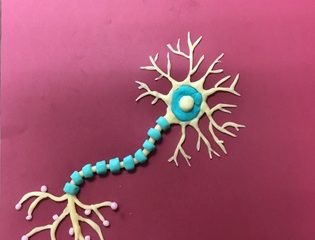Here is what I am reading today:
“Brain scans of people under the influence of the psilocybin, the active ingredient in magic mushrooms, have given scientists the most detailed picture to date of how psychedelic drugs work. The findings of two studies being published in scientific journals this week identify areas of the brain where activity is suppressed by psilocybin and suggest that it helps people to experience memories more vividly.”
“A new study led by researchers at the University of California, Berkeley, provides even more reason for people to read a book or do a puzzle, and to make such activities a lifetime habit.”
“Getting an autism diagnosis could be more difficult in 2013 when a revised diagnostic definition goes into effect. The proposed changes may affect the proportion of individuals who qualify for a diagnosis of autism spectrum disorder, according to preliminary data presented by Yale School of Medicine researchers at a meeting of the Icelandic Medical Association.”
“A simple program involving color-coded food labeling and adjusting the way food items are positioned in display cases was successful in encouraging more healthful food choices in a large hospital cafeteria. The report from Massachusetts General Hospital (MGH) researchers will appear in the March American Journal of Public Health and has received early online release.”
“Research has found that small-group dynamics — such as jury deliberations, collective bargaining sessions, and cocktail parties — can alter the expression of IQ in some susceptible people.”
“The Beck Institute for Cognitive Behavior Therapy is pleased to announce its 3rd Annual Student and Faculty Scholarship Competition. The Beck Institute will award 10 recipients (graduate students, postdoctoral fellows, residents, and faculty in psychology, psychiatry, social work, nursing, and counseling) with full tuition scholarships to our 3-day Student and Faculty Workshop, in Philadelphia, PA, on August 13 – 15, 2012.”
“Researchers from the University of California have found that negative social interactions can cause internal inflammation that may over time lead to possible health consequences. In the study, the results of which the team has published in the Proceedings of the National Academy of Sciences, the team writes that stressful events can lead to increased production of cytokines, molecules that are produced when inflammation occurs.”




7 Comments
astiers · January 28, 2012 at 12:09 pm
“color coding and healthy choices” is an awesome new idea on encouraging people to eat healthier. It is very accurate to say that people don’t want to take the time to calculate the amount of calories per serving and how many servings they are going to eat. People are busy. Many people eat without thinking, they have a working lunch and snack on food while responding to emails. These people are not paying attention to how much they are eating, they will stop when the bag is empty nor are they conscious of how healthy it is. Few people pack lunches to work and most just grab a sandwich from the deli and a drink. The color coding system makes making healthy choices easier and doesn’t require more brain work. I think this is a great idea and should be implemented in college universities.
astiers · January 28, 2012 at 12:14 pm
The new criteria for diagnosing autism has strong implications for affecting the number of individuals to receive government aid. Many families with autistic children rely on government programs and aid to get their children the help they need. But this new criteria may also decrease the number of people labeled autism in a positive way. Autism is not understood by the general population to be a spectrum of varying degrees. The new criteria may make it easier for people previously diagnosed with autism spectrum disorder to get jobs. This new criteria could do both good and bad, but only time will tell.
Alana Snelling · January 29, 2012 at 5:08 pm
Color Coding and Healthy Choices:
I find it hopeful that a process such as this can help individuals choose food and drinks that will allow them to take out the complicated steps of counting calories in order to lose weight. While reading the article I began wondering where the cut off points for which they categorized foods into green, yellow and red. I understand that they took into consideration all of the criteria included in different foods. I am just curious how much sugar or fat a food had to have in order to receive the grade A.
Alana Snelling · January 29, 2012 at 5:23 pm
Brain Imaging of the Hallucinating Brain:
This article really surprised me when it stated that some of the participants rated their depression to have gone down some time after they had done the psychedelic trip. I wonder if these individuals felt happier because during their trips they possibly were accessing happy memories that in some way left them with a cheerful feeling days later. I don’t think that this drug will be implemented into help for depression anytime soon, but I think it is another avenue that should be studied more in order to help more persons in need of help.
jdeen · February 11, 2012 at 8:37 pm
In Response to ‘fMRI brain imaging illuminates magic mushrooms’ psychedelic effects’
This article reviews some interesting results from primary literature. Aside from what has been reported in this article it is also interesting to think about the evolution of psilocybin; considering it is a natural compound found in various mushrooms and can be ingested in an unaltered form to attain the effects. One could easily ascertain that animals would tend to shy away from a food that produced said side effects, but what was the evolutionary advantage for these particular side effects? Why wouldn’t the mushroom just evolve a lethal poison?
jdeen · February 11, 2012 at 8:37 pm
In response to ‘negative social interactions can lead to increase amounts of internal inflammation’
It is interesting to hear that increased inflammation can result from an acute stress situation due to stimulated cytokine levels; this seems to directly oppose the anti-inflammatory effects of cortisone, a hormone that is also released in acute stress situations. Also interesting: cortisone is known to suppress the immune response of which cytokines play a vital role in. This only contributes to my awe of the complexities of the human body.
Katie · February 17, 2012 at 3:28 am
In response to “small group settings and behavior”:
I’m a bit surprised about the conclusions, and potentially skeptical to say the least. It is so difficult to be sure of the controls of this type of experiment – what if the group setting that they simulated was regarding a really boring topic for the participants? If that were the case, then it could be the reason for the decreased brain activity in the females. Also, brain activity would have likely been higher if they were with friends and thus targeting other areas of memory. Usually, students study in more enjoyable environments including music and/or friends – a study utilizing that would have been more representative. Nonetheless, each person’s brain is very different and it is difficult to make conjectures about which specific activities stimulate different peoples’ neurons. It would be ideal if each student could receive a brain scan to determine the stimuli causing maximum brain stimulation which would thus correspond to the most efficient method of studying.
The article says: “social dynamics affect not just educational and workplace environments, but also national and international policy-making bodies, such as the U.S. Congress and the United Nations” which is very interesting. The environments and methods in which people interact with each other influences the individual’s mood and performance in the workplace. On a larger scale, the way that each person individually performs (which is usually revolved around these small group settings) hugely affects the way individual societies and the government behave as a whole.
Comments are closed.